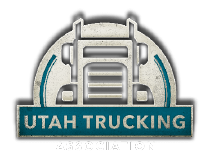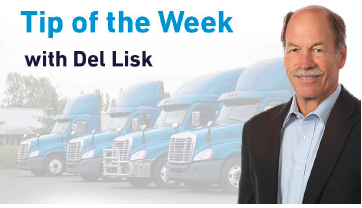Tip #4: Are your drivers ready for the reopening?
We’re far from the end of difficult times, but it’s pretty clear that America is slowly beginning to reopen. With this important step toward economic recovery comes risks. The most obvious risk is opening too soon and experiencing an uptick in COVID-19 cases.
Another risk that is not as obvious is the increase in driving risk as traffic on our roadways begins to grow. With many staying at home in March and April, traffic has been very light and crash rates have dropped dramatically. A byproduct of these less challenging driving conditions is that some drivers may have become complacent, let their guards down, or
developed some bad habits. Lytx data, as well as data from other sources, point toward drivers driving faster and being less likely to obey traffic laws, such as making complete stops at stop signs. With few drivers on the road, the consequences of driving mistakes has been relatively modest. Nevertheless, as traffic picks back up, so does the potential for incurring consequences of poor driving decisions.
Drivers need to begin shifting their mindset to be ready for the inevitable increase in traffic. Commute and delivery times will take longer, and the potential for frustration and stress will be higher. It is a great time for fleets to prepare drivers for this changing environment by focusing on essential safe driving practices and actively seeking feedback from drivers. Is increased traffic affecting schedules? Are previous delivery or service windows now unrealistic and creating impossible to meet expectations that could foster customer dissatisfaction and elevated driver stress? Listen to your drivers, and be prepared to adjust.
Safe driving is a matter of mindset. Make sure your drivers are mentally prepared for a return to the more challenging driving environment that will undoubtedly come with the reopening of America.
Tip #3: Sanitizing Truck Cabs
The Centers for Disease Control and Prevention (CDC) and the World Health Organization (WHO) believe the COVID-19 virus spreads primarily through person-to-person contact and through respiratory droplets when an infected person sneezes or coughs. They also believe COVID-19 can be contracted by touching a surface or object then touching your mouth or nose. Current information suggests the virus may remain viable for hours or even days depending upon the surface. In general, the less porous the surface, the longer the virus can survive.
This unfortunate news means that most surfaces on the cab of a vehicle are a potential source of the virus. To protect against this risk, many fleets require a sanitizing wipe down of the cab and other high touch areas before and after each shift. This is a mundane task often done by people who are not normally asked to do this. It is out of their routine, and the chances are high something could be missed such as a door handle, seat lever, or radio knob.
What can you do to limit this risk? One client has taken a creative approach to minimizing this concern. They have placed “wipe me” stickers on all of the high touch areas in their vehicles. It is not foolproof, but it is a clever way to improve the thoroughness of their vehicle sanitizing efforts and protect their employees. Another option is to create a laminated list of high-touch objects to clean so drivers will remember to wipe down areas they may not think about, especially if they are in a hurry. These can include glove compartment handles, fuel door locks, seatbelts, mirrors, visors, and so on.
For more ideas on how to keep your drivers and vehicles free of the coronavirus, check out this article from Sean Dwyer, Deputy Chief of Manatee County EMS in Florida, where he supervises safety protocols for the department’s first responders. Sean’s team has created a 3-step cleaning routine for their emergency vehicles that’s especially thorough.
Tip #2: What Took so Long? Recognizing the Critical Role of the Truck Driver
It’s easy to take things for granted living in such a prosperous country as the U.S. We expect clean water to come out of the tap when we turn the faucet and lights to come on when we flip the switch. And, we expect the shelves to be fully stocked when we go to the grocery store.
As I walked the aisles of my local grocer a few weeks ago, I had a growing sense of panic as I looked at empty shelves. Fresh produce was limited and canned goods were picked clean. All that was left in the frozen foods section were two packages of kale with edamame in buttery sauce. Apparently, not even a pandemic could drive the masses to eat that! Most disastrous of all was the paper goods aisle. No paper plates, napkins, or paper towels. Worse yet, still no toilet paper!
The things we took for granted have become precious.
It’s unfortunate that it’s taken a crisis for people to recognize the essential role truckers play in supplying us with the critical goods we need. Now there are daily news reports about how our heroes on the road continue to deliver the supplies we need despite the risks to their own health. This recognition is well deserved and long overdue. Truckers
have always been the silent heroes ensuring we have what we need to live the lifestyles we desire. What took so long?
Here’s my tip of the week: If you see a trucker on the road, tap your horn and give them a thumbs up. Next time a truck is trying to merge into your lane, go ahead and back off and let them in. Remember, they may be on their way to stocking the shelves at your grocery store.
Tip #1: Helping drivers cope with stress and fear
Just a few weeks ago, few of us would have understood terms such as “shelter in place” or “maintain social distance”. The rapid escalation of the health crisis and the lack of visibility as to when things will return back to normal leave many fearful and anxious. This fear can impact mental and physical health and erode morale.
Stress and fear can be exacerbated for drivers delivering critical goods and services. They are traveling alone into customer environments where they have little or no knowledge of what mitigation efforts have been taken by the client.
What can you do?
Managers are used to checking on drivers during the workday to verify what they are doing. In times like this, it’s more important to check in with your drivers to find out how they are doing.
Put the clipboard down, and listen to what they have to say. Be empathetic and put yourself in their position. Let them know they are not alone, you are listening and care about them. Make this check in part of your daily routine; it will go a long way in reducing driver concerns and stress. One Lytx client shared with me that they’ve made it a practice during these times to check in with every driver each morning and again later in the day, not to find out what they are doing, but to see how he or she is doing.
Stay safe and stay well! Del

